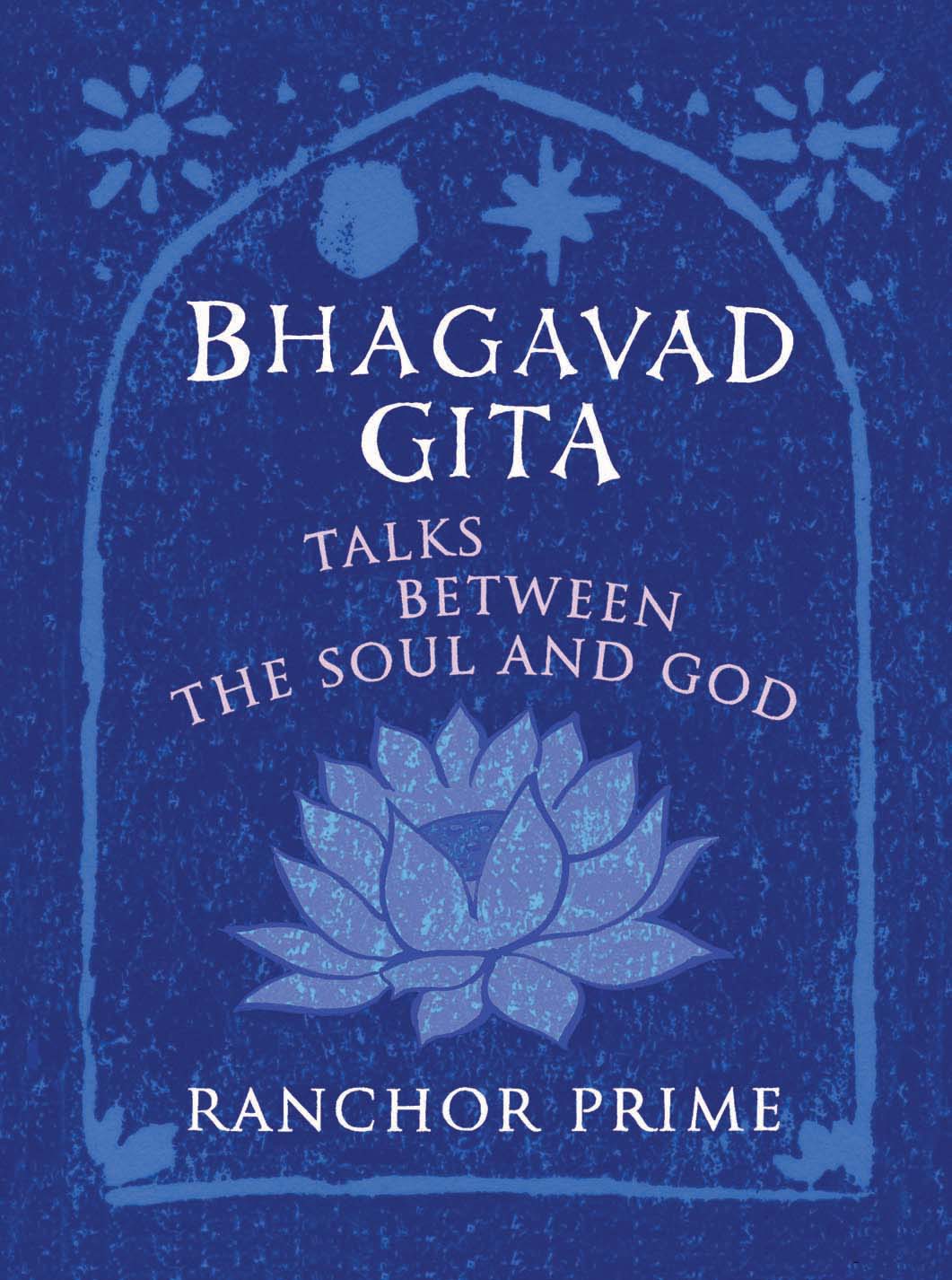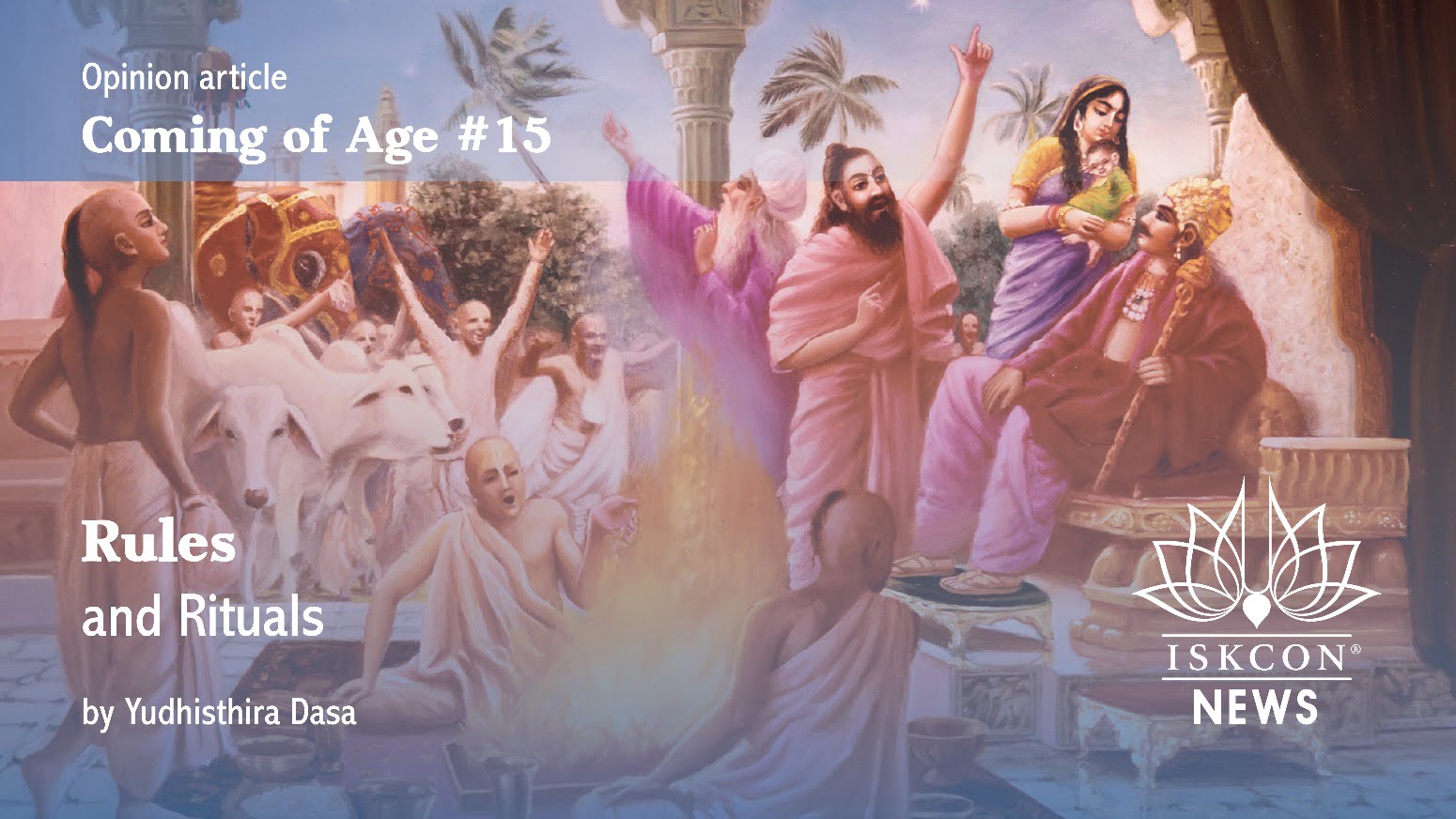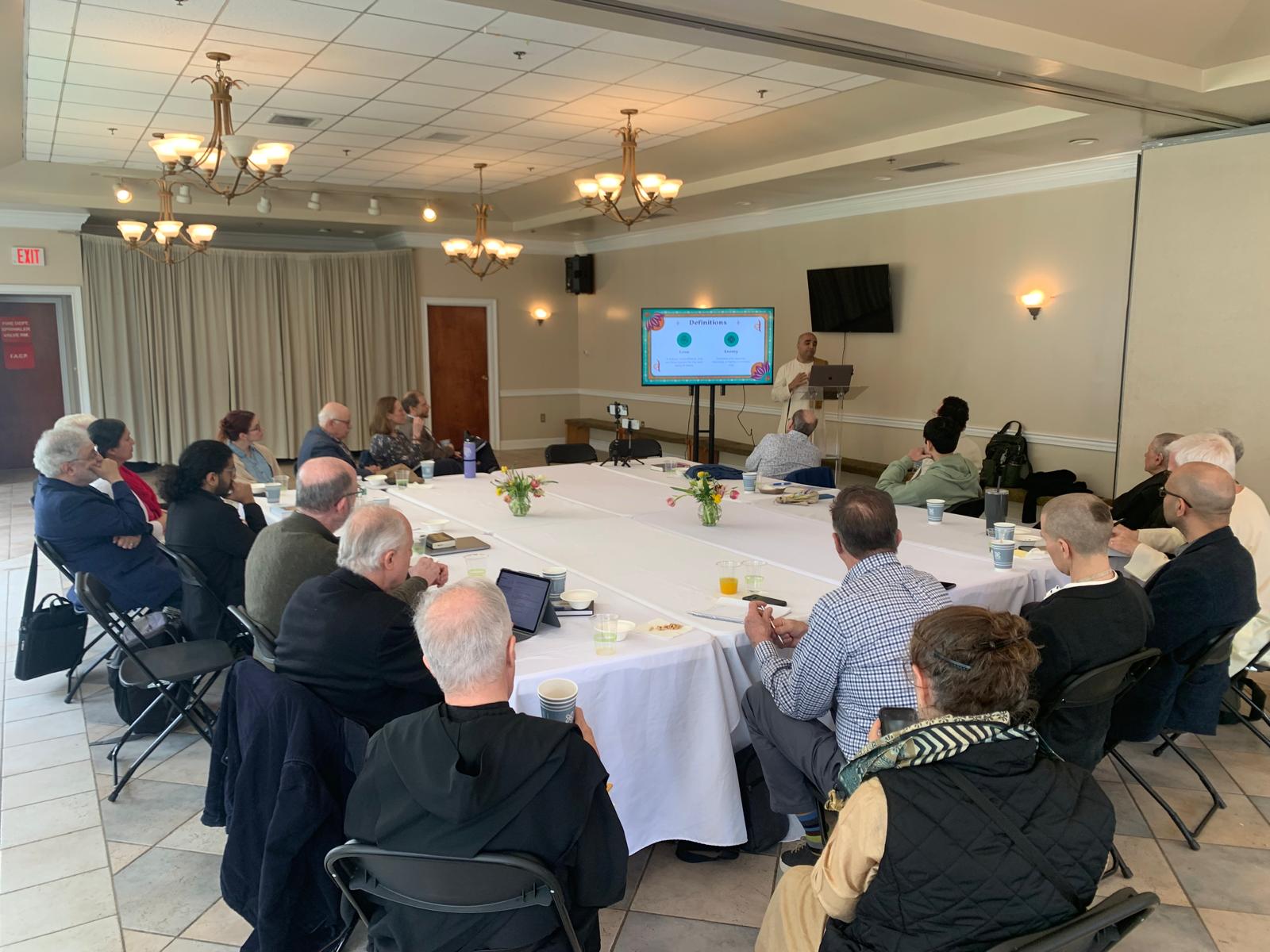New Edition of Bhagavad-gita Aims to Reach Mainstream Audience
By Madhava Smullen | Aug 07, 2010

A new translation and commentary of the Bhagavad-gita by British author and ISKCON devotee Ranchor Prime, subtitled Talks Between the Soul and God, was released this May to broad acclaim. But its author says it was over twenty years in the making.
“Back in the 1980s, I taught a Bhagavad-gita study course for about two years in a particularly open-minded church in Picadilly, London,” he says. “There, as I always have when speaking to people about the Gita, I would paraphrase ISKCON Founder Srila Prabhupada’s translation, for the sake of easy understanding. I also discovered that it’s a whole different challenge to teach the Bhagavad-gita to people who are not coming to hear as members of the faithful—yet the Gita is a lot more universal than we often present it as being.”
As his children Rupi and Anasuya grew up in the 1980s, Ranchor would also teach them the Gita by paraphrasing it and putting it into contemporary, simple language.
In 1990, Ranchor and other then UK managers of ISKCON’s publishing company, Bhaktivedanta Book Trust, invited mainstream publishers and other media professionals to help them take a fresh look at Prabhupada’s books.
“You have lovely books—they’re beautiful, deeply spiritual and meaningful,” was the response. “But these are your primary literatures, for serious devotees. Where are your secondary literatures for the wider public?”
Nothing was done about it at the time. But in 1992, as soon as Ranchor finished Hinduism and Ecology, the book he’d been working on, he began to consider finally putting his presentation of the Gita into writing. Producing a sample chapter in 1995, he sent it to several of his respected peers: ISKCON guru Sivarama Swami, BBT editor Jayadvaita Swami, and dedicated book distributor Gopavrindapala Dasa.
“With some trepidation, I was thinking, do I have the right—do any of us have the right—to publish our own edition of the Gita?” Ranchor says. “But the response I got back from everyone was unreserved encouragement. ‘Do it,’ they said. ‘This will become something very valuable.’”
So Ranchor set to work. He was sidetracked several times and wrote other books as he worked on the Gita, including Ramayana: A Journey and Prince of Dharma: the Buddha. Finally, in 2003, it was published in England by Godsfield Press, and in America by Barrons Educational as The Illustrated Bhagavad-gita.
But the format was not at all what Ranchor had had in mind: while it contained lovely photographs of India, the pictures were the main focus, and the writing—in small, grey, hard-to-read text—seemed to be there only to fit around them.
It took Ranchor until 2009 to get the copyright for his work back. After polishing it and bringing it up to date, he published it again in May 2010, this time with his own publishing house, Fitzrovia Press, and in the way he had intended it to be presented.
At 240 pages, the book is small and compact. It’s illustrated by professional artist Charles Newington rather than by a devotee, a conscious decision on Ranchor’s part to take the Gita out of its Indian cultural context and give it a more contemporary western flavor.
Yet the book’s most essential feature—apart from the simplicity of the language—is that, without any change to the structure of the Gita, it is divided into easily digestible sections according to topic, each only a page or two long. “My intent was to make it easy to read, teach, or to share with others,” Ranchor explains.
This simplicity and directness is what sets Ranchor’s book apart from the many other editions of the Gita.
“This is not a book for intellectuals,” he says. “There’s no long complicated words, no footnotes, no extraneous commentary. I believe that if something is worth saying, it should be possible to say to an intelligent child. As Jesus said, ‘unless you turn and become like children, you will never enter the kingdom of heaven.’
So I’m just trying to allow Krishna’s words to shine through as clearly as possible, and then getting out of the way.”
When Ranchor says he’s getting out of the way, he means it. He tries not to be too prescriptive, instead allowing readers to take from the book what they will. One of the reasons for this is that a target audience for the book is today’s large yoga community, who have a broader take on religion and don’t want to be funneled into a particular view that they would see as sectarian.
Despite the universal presentation, however, Ranchor has not compromised the Gita’s spirit of devotion for Krishna. “The book ends with the Hare Krishna maha-mantra, and throughout it I am gently nudging readers in the direction of a personal God,” he says.
Since mainstream religion, at least in the West, has always depicted a personal God, Ranchor feels this will be easy for a broad audience to accept. In fact, many of his readers will be people who are religiously inclined, although they may not be actively religious. They may believe in God, but find themselves lacking inspiration from the western classical religious traditions.
Whatever the reader, Ranchor feels they will find something meaningful in the Gita. “As my edition is subtitled, the Bhagavad-gita is Talks Between the Soul and God,” he says. “It’s an opportunity to hear God’s voice. Of course, we can all hear God’s voice from within, but the Gita shows us how. Its essential message is as Krishna says, ‘I am within the heart of everyone, destroying the darkness of ignorance and giving you the intelligence by which to come to me.’”
What’s more, Krishna’s message does not require us to dramatically change our lives—only our intention. “He says, ‘Carry on doing whatever you have been given to do, but try to dedicate your life to My service,’” Ranchor explains. “And if you can’t do that, simply practice giving up the results of your work.”
With its clear, broad voice, Ranchor’s edition of the Gita has been very well-received by the book trade, yoga and mainstream audiences alike. The Bookseller called it “a very accessible edition, demonstrating that the Gita has words of wisdom for everyone,” while Om Magazine said, “His section-by-section commentary opens the text to the spiritual seeker,” and Atlantis bookshop proprieter Geraldine Beskin enthused, “Delicious is the word for this fresh, skilful and beautiful new edition.”
Leading ISKCON devotees have also endorsed the book as an excellent outreach tool, with BBT editor Jayadvaita Swami calling it “a congenial starting place” for a “modern, educated Western reader not yet ready to ‘dive in’ and accept our standard ISKCON package.”
The book is set to hit mainstream book stores in the UK, while Ranchor and illustrator Charles Newington have been invited to present it on the main stage at Folkestone book festival in Kent in November, and hope to continue touring the book festival circuit.
Despite the enthusiastic reception from all quarters including ISKCON devotees, Ranchor says he was initially concerned at embarking on another edition of the Gita when his guru Prabhupada’s own was already available. But a message from Prabhupada himself, in the purport of Bhagavad-gita As It Is chapter four verse three, set his mind at rest: “Any commentary on the Gita following in the footsteps of Arjuna [in other words, in the mood of devotion to Krishna] is real devotional service.”
“Prabhupada’s Bhagavad-Gita remains the gold standard,” Ranchor says. “And I would point anyone who’s serious about Krishna consciousness straight to it.
However for those who are not yet at that level, Prabhupada encouraged us to pass on what we’d learned from him in our own words. So that’s what I’m trying to do.”
Bhagavad-gita: Talks Between the Soul and God is available online at http://www.fitzroviapress.com/books/gita.htm for UK customers, or at http://www.amazon.com/Bhagavad-Gita-Talks-Between-Soul/dp/0956184642/ref=sr_1_1?ie=UTF8&s=books&qid=1281121968&sr=8-1 for international customers.














